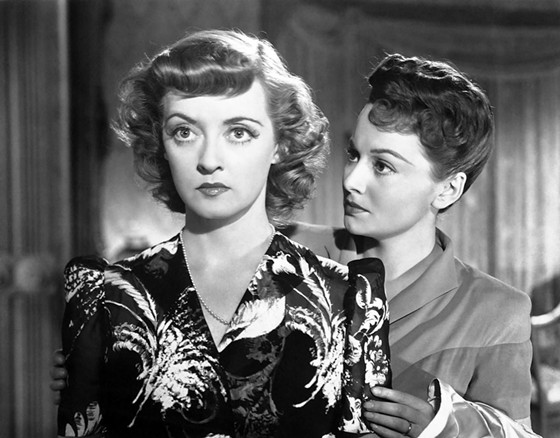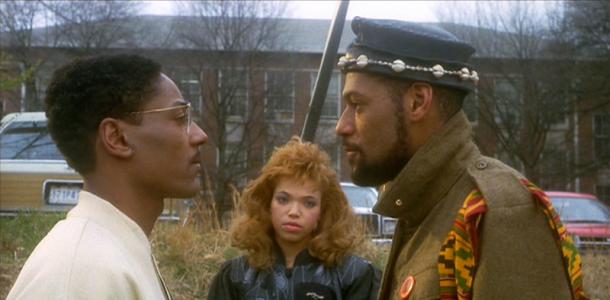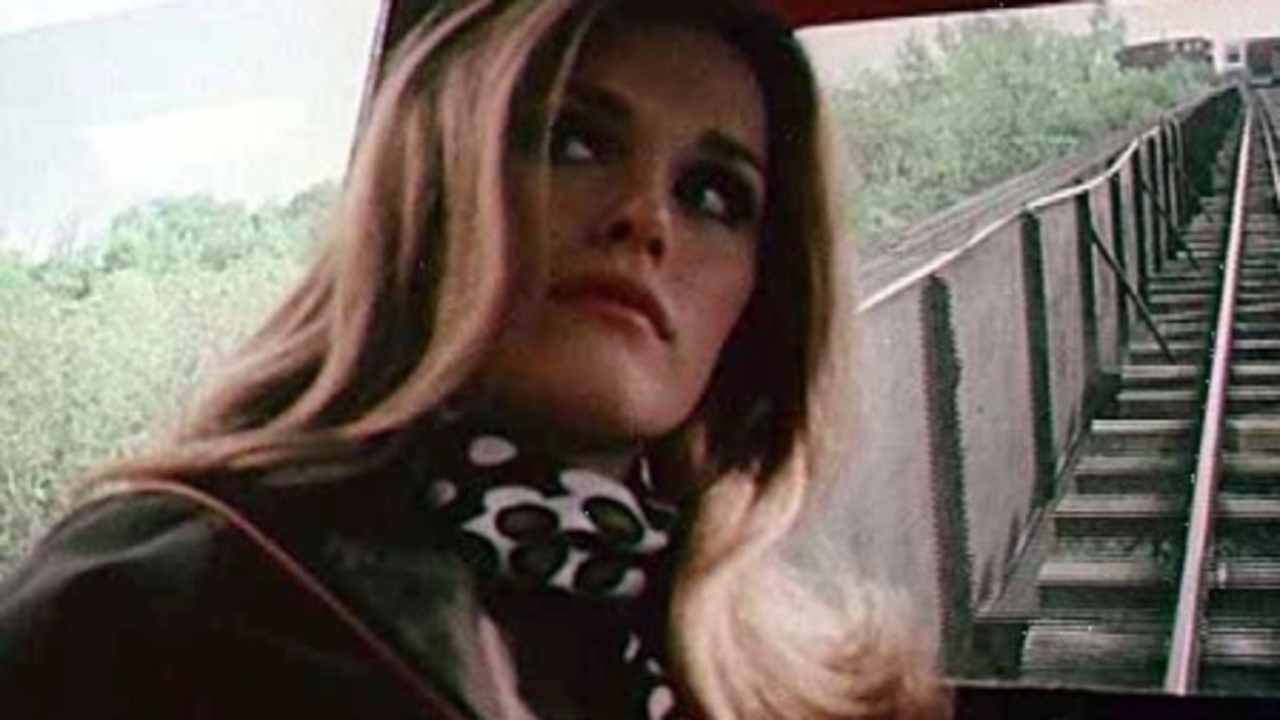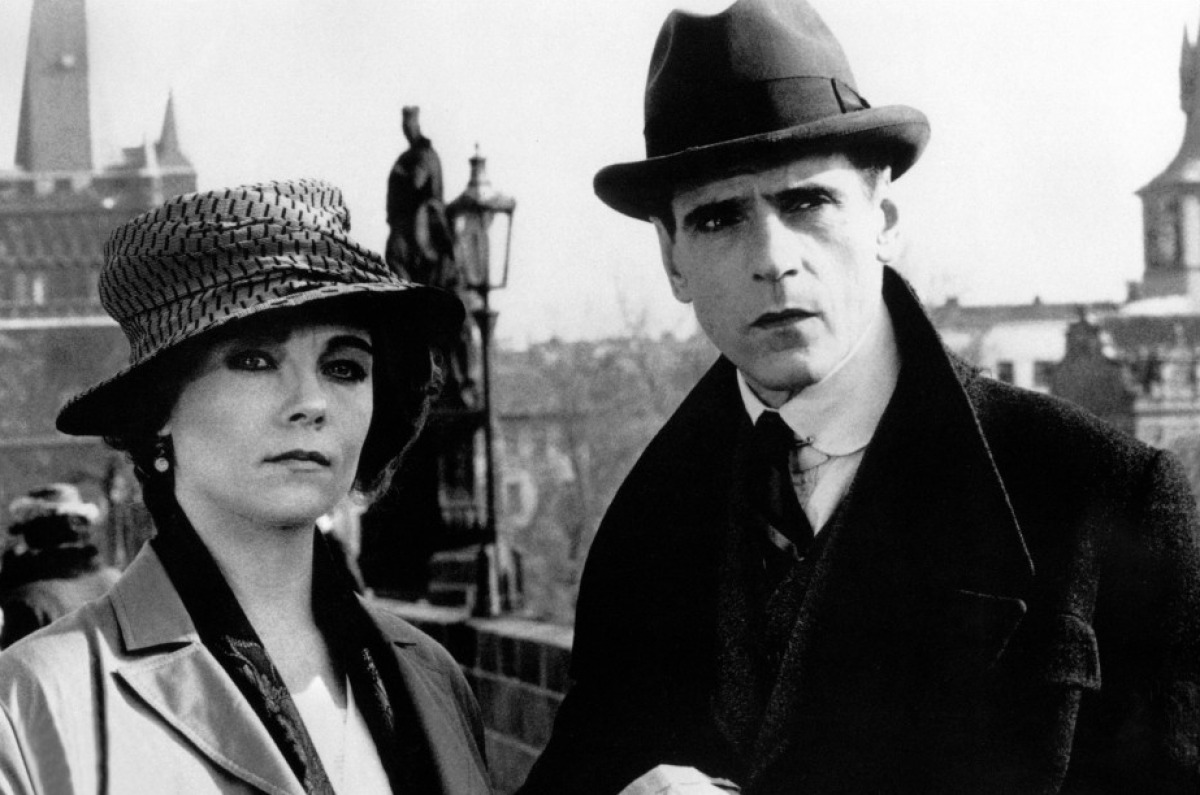6. John Huston – In This Our Life (1942)

Debut: After a successful existence as a Hollywood screenwriter (“Sergeant York”, “High Sierra”) John Huston finally got the higher-ups to give him a shot at directing. This directorial turn resulted in the milestone classic “The Maltese Falcon” (1941), an airtight murder mystery that set the precedent for crime thrillers ever since, and catapulted him overnight into an A-list director.
Film In Question: That follow-up was the studio drama starring powerhouse actress Bette Davis, and was based on the controversial play regarding race relations. Many troubles plagued the set; Davis’ diva-like behavior made for a tense production, and it didn’t help that her husband had fallen deathly ill during the production.
On top of that, the Japanese military bombed Pearl Harbor and the United States entered the global war. Huston had to leave three-quarters through production on a military assignment, which left Raoul Walsh (“White Heat”) to come in and pick up the slack; he and Davis butted heads nonstop.
The resulting film came out to a mild reception, and was written off as a middle-of-the-road Oscar-bait production that lacked the bite of the source material. It was seen as a quick disappointment from the young promising filmmaker.
Is It Any Good? Well, Huston had his hands off the typewriter for what feels like a basic studio assignment instead of an involved project, and his cynical humor and fierce morality are sadly missing.
In addition, any interesting debates the material originally held were scrubbed away to make room for an average Davis vehicle. It’s nothing to write home about and is definitely beneath the director’s pedigree, despite a feisty lead performance.
Aftermath: Whilst filming several documentaries for the military, Huston was able to get his career back on track with a string of successful collaborations with his “Maltese” star Humphrey Bogart. “Across the Pacific” (1942) and “Key Largo” (1948) were solid thrillers, but it was “The Treasure of the Sierra Madre” (1948) that reached classic status, which lead to a healthy and colorful filmography that continued to his dying day.
7. Neill Blomkamp – Elysium (2013)

Debut: An impressive backlog of commercials and short movies lead to Peter Jackson hiring Neill Blomkamp as director on the “Halo” movie adaptation, and when that project fell through, Jackson offered to make a feature film version of the young director’s short movie “Alive in Joburg” as a consolation prize.
That turned into “District 9” (2009), the exciting sci-fi action bonanza that had a crackingly clever political allegory, and a unique South African flavor to boot. Blomkamp had arrived and the world couldn’t wait for what he’d do next.
Film In Question: That follow-up would finally arrive in the guise of this anticipated follow-up, a sci-fi action bonanza with a political allegory and… wait, doesn’t this sound awfully familiar? That’s because it was. “Elysium” had a bigger budget and a higher profile cast (Matt Damon, Jodie Foster, Wagner Moura), but it’s whole slumdog metaphor was shallowly repeated with fewer places to go, making the whole thing feel like a minor ordeal. Audiences and critics alike were underwhelmed with the results.
Is It Any Good? Blomkamp knows how to make his action scenes exciting and his visuals look unique, but ultimately the premise’s potential is squandered with the whole thing playing out in a by-the-numbers style. It’s a passable action movie with some inventive weaponry and production design, but not much else.
Aftermath: It’s too early to say, even though his pedigree has slumped and his third film “Chappie” (2015) was even more off the mark and reliant on reusing his old material. However, there’s no denying the man packs a technical punch. One hopes with the right material (such as his potential “Alien” sequel), he could easily jump back on track.
8. Spike Lee – School Daze (1988)

Debut: The energetic, street-level romantic comedy “She’s Gotta Have It” (1986) was a sensation back in its day. Not only does it subvert cinematic conventions of women and black culture, its clever style and witty dialogue made it a noticeable hit on the art house scene and positioned Spike Lee as an exciting voice of a new generation.
Film In Question: Lee landed a studio-level budget for his ambitious follow-up, which focused on the racial divides within the black college communities. The film was a financial bust with many critics unimpressed, as it attempted to skirt several genres and tackle controversial hot topics, but stumbling with its high goals. After failing at his chance at the big time, Lee was understandably put in a difficult position.
Is It Any Good? “Daze” is not unwatchable, but it is a big old mess, biting off way more than it can chew by haphazardly switching from a musical, to a frat comedy, and to a romance, never knowing where it stands and not giving its juicier subjects ample time for examination. It truly feels like Lee was so pleased by his large budget that he tried to cram every ambition he had sitting in his head over the years; it’s sadly too much that led to too little.
Still, it’s worth observing strong early turns from Laurence Fishburne, Giancarlo Esposito, and Samuel L. Jackson at the beginning of their respective careers, but conclusively, this remains the one ugly duckling from a 10-year peak period in Lee’s filmography.
Aftermath: Lee would shake off his unease with a big budget by delivering his fierce classic “Do the Right Thing” (1989), leading to a muscular period of strong film work. Things have been spotty lately, but there’s no denying his impact on cinema from back in the day.
9. George A. Romero – There’s Always Vanilla (1971)

Debut: The most influential horror films of the last 50 years – George A. Romero’s “Night of the Living Dead” (1968) – shook up the industry, creating the precedent for the modern zombie movie with a strong political undercurrent to boot. The grueling classic was a massive success, scoring equally with the drive-in crowd as well as the high-brow critics, and anticipation was high for his follow-up.
Film In Question: Romero wanted to avoid typecasting, so he tried his hand at another low-budget but successful corner of the movie market – the hippie sex comedy. The production ran out of cash and Romero had to salvage what was left in the editing room, with a narration gag helping glue it together. Its release was hampered by zero marketing and the critics weren’t kind to it. Romero has personally called it his “worst movie” and didn’t care much for it during production as well.
Is It Any Good? To be honest, Romero has made worse films, yet are none as forgettable as this one. Coming off as an average product of the era’s niche genre with lots of ‘hip’ talk and ‘radical’ views of romance, it doesn’t beg itself for viewing. Only die-hard Romero fans, curious to check out his awkward period before he returned to horror, need apply.
Aftermath: Romero was burnt by the experience and rightfully put aside silly ambitions and returned to the genre in which he flourished – horror. “The Crazies” (1973) and “Martin” (1978) were successful with critics, but “Dawn of the Dead” (1978), his proper return to zombie films, was the pinnacle of his career and has cemented his status in horror history ever since.
10. Steven Soderbergh – Kafka (1991)

Debut: Singlehandedly kickstarting the 90’s independent film craze and Miramax’s vice-like grip on it, “Sex, Lies and Videotape” (1989) was a relevant, intelligently executed drama at a time where audiences thirsted for smartly-made cinema. It made big waves with its low budget, and Steven Soderbergh was in a position to make any damn thing he wanted as his next project.
Film In Question: Surprisingly, that project was a jarring 180 from his debut – a highly stylized thriller/horror heavily influenced by Franz Kafka’s writings. Viewers expecting more of the same from Soderbergh were understandably confused and the critics were left cold. In the burgeoning golden age of the indie film, Soderbergh was quickly left behind as bigger fish took up the mantle.
Is It Any Good? Incredibly dense and not easily accessible, it doesn’t help that the plot is hardly involving and the charismatic Jeremy Irons is miscast as the mousy everyman protagonist. Regardless “Kafka” makes for a fascinating fantasy movie steeped in visual homage to German Expressionism with its atmospheric doom-laden plot. A uniquely dystopian mood piece with some fantastic location work in Prague, it’s not everyone’s cup of tea, but it’s hardly the disaster of which it was sadly dismissed.
Aftermath: Soderbergh took a big stumble with the project, and it didn’t help that his next handful of movies flopped as well (“King of the Hill”, “The Underneath”), leaving him largely forgotten. Yet, his first collaboration with George Clooney in the lush crime film “Out of Sight” (1998) led to his rejuvenation behind the camera that resulted in several creative achievements, award winning praise, and some box office winnings as well.